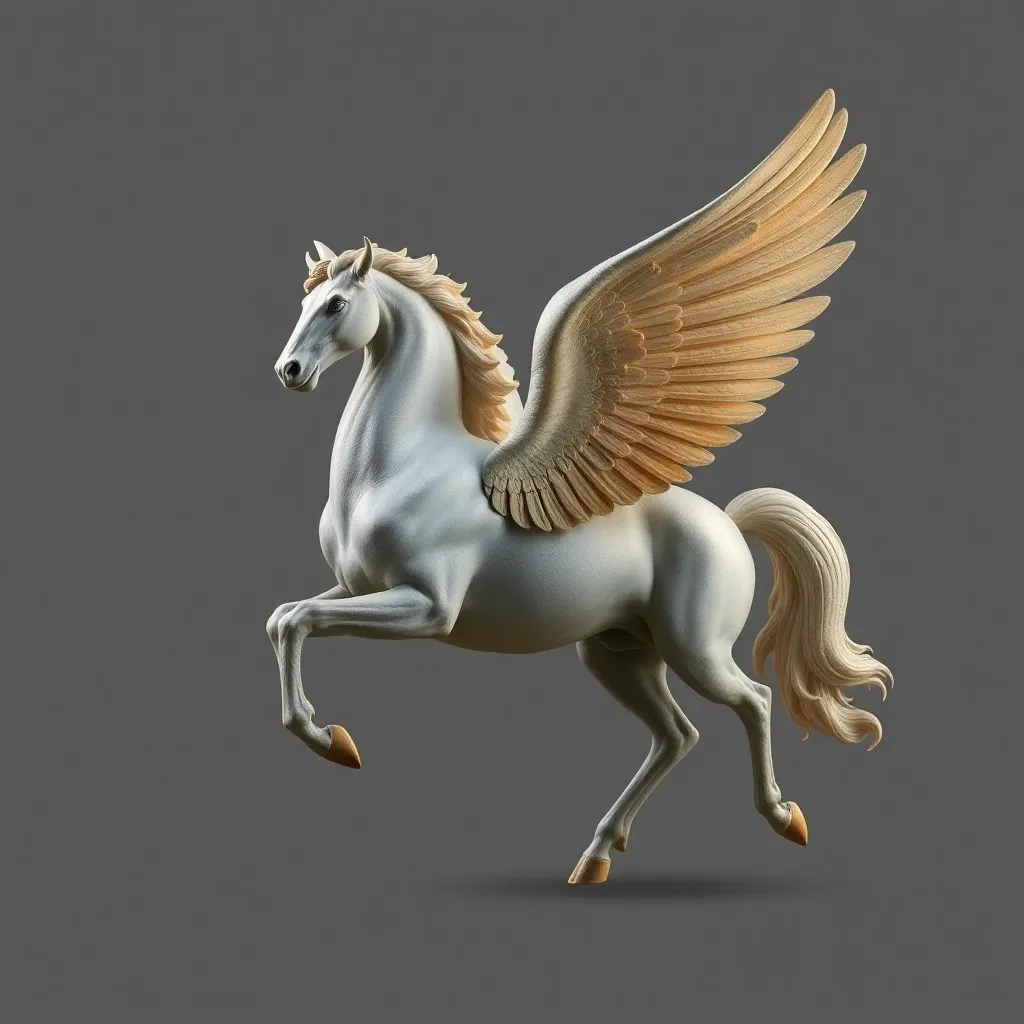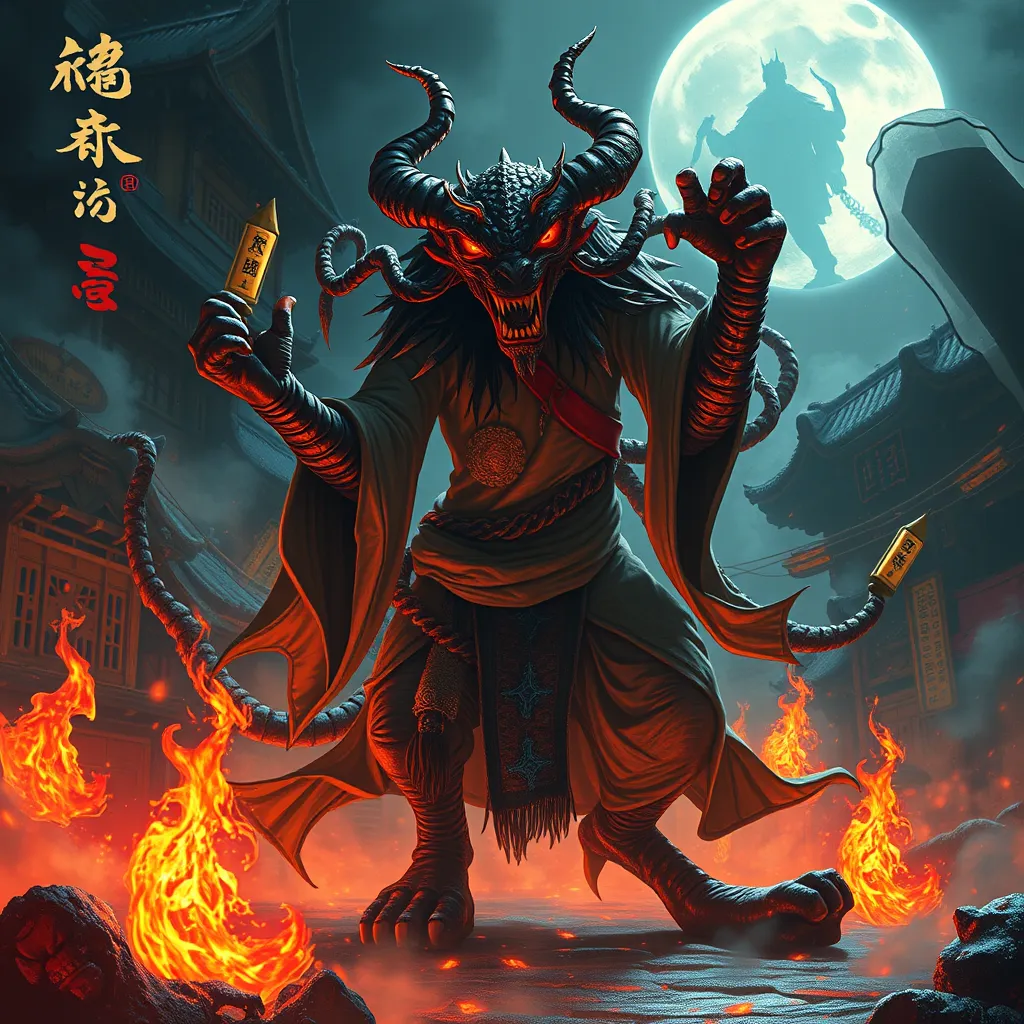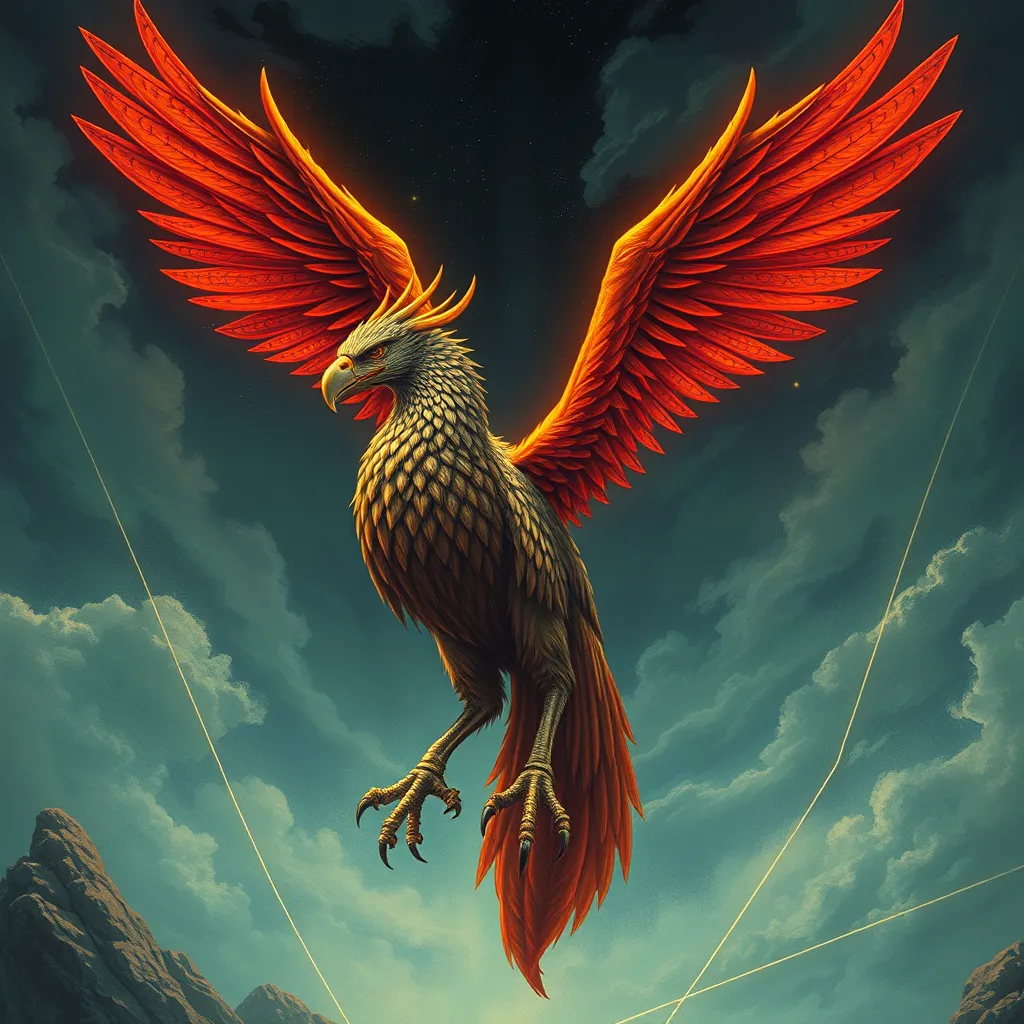Pegasus in Roman Mythology: A Comparative Study of Adaptations and Influences
I. Introduction
Pegasus, the winged horse of Greek mythology, has captivated the imaginations of countless generations. This mythical creature, born from the blood of Medusa, symbolizes inspiration, poetic creativity, and the heights of aspiration. In Roman culture, Pegasus retained much of his Greek significance but also underwent transformations that reflected the values and beliefs of Roman society.
The purpose of this comparative study is to explore the origins of Pegasus in Greek mythology, examine how his character adapted in Roman narratives, analyze his depiction in art and literature, and understand the cultural and historical influences that shaped these adaptations. By doing so, we aim to uncover the enduring legacy of Pegasus across different cultures.
II. Origins of Pegasus in Greek Mythology
A. Birth and lineage of Pegasus
Pegasus emerged from the blood of Medusa when she was slain by the hero Perseus. According to Greek mythology, he was born alongside his brother Chrysaor, who was a giant wielding a golden sword. Pegasus is often associated with the Muses, particularly the Muse of poetry, as he is said to have created the spring of Hippocrene on Mount Helicon by striking the ground with his hoof.
B. Role in Greek myths and stories
Pegasus appears in several significant Greek myths. One of the most notable stories involves the hero Bellerophon, who tamed Pegasus and rode him to defeat the Chimera, a monstrous creature that breathed fire. This partnership symbolizes the union of human courage and divine inspiration.
C. Symbolism and attributes of Pegasus in Greek culture
Pegasus embodies several attributes in Greek culture:
- Inspiration: Often seen as a source of poetic inspiration.
- Freedom: His ability to fly symbolizes freedom and transcendence.
- Heroism: Represents the heroic journey and the struggle against monstrous forces.
III. Adaptation of Pegasus in Roman Mythology
A. Transformation of Pegasus’ character in Roman narratives
In Roman mythology, Pegasus retains many of his Greek characteristics but is also adapted to reflect Roman values. While he remains a symbol of inspiration, his narratives often emphasize themes of duty and honor, aligning with Roman ideals of virtus and fides.
B. Key Roman myths featuring Pegasus
Pegasus appears in various Roman texts, such as Ovid’s “Metamorphoses,” where his birth and adventures are recounted. Unlike in Greek mythology, where he is closely associated with heroes, Roman stories often depict him in relation to the gods, further elevating his status as a celestial being.
C. Differences in symbolism and significance compared to Greek mythology
In Roman culture, Pegasus is often seen more as a divine creature than a companion to heroes. His imagery is linked to the divine and serves as a symbol of poetic inspiration, but also of the Roman pursuit of glory and achievement.
IV. Iconography of Pegasus in Roman Art and Literature
A. Depictions of Pegasus in Roman visual arts
Pegasus is frequently depicted in Roman mosaics, frescoes, and sculptures. Artists portrayed him with grand wings and a noble posture, emphasizing his divine nature. Common representations include scenes of Pegasus in flight, often alongside Muses or gods.
B. Literary references to Pegasus in Roman texts
Roman poets, including Virgil and Ovid, referenced Pegasus in their works. Ovid’s “Metamorphoses” provides detailed accounts of Pegasus’s origins and his role in various myths, showcasing the creature’s adaptability to Roman literary traditions.
C. Influence of Greek representations on Roman adaptations
Roman adaptations of Pegasus were heavily influenced by Greek representations. While the core stories remained intact, Romans infused their interpretations with elements that highlighted their societal values, such as duty and the importance of the state.
V. Cultural and Historical Influences on Pegasus’ Adaptation
A. Impact of political and social factors on the portrayal of Pegasus
The portrayal of Pegasus in Roman mythology was influenced by the political landscape of the time. As Rome expanded, the incorporation of Greek mythology into Roman culture served to unify diverse peoples under a shared narrative framework.
B. Interaction between Greek and Roman cultures
The interaction between Greek and Roman cultures led to a rich exchange of ideas and mythological figures. As Romans adopted Greek myths, they often altered them to reflect their cultural and political ideals, demonstrating the fluidity of mythological interpretation.
C. Changes in religious beliefs and their effect on mythological figures
As Roman religion evolved, the significance of mythological figures like Pegasus shifted. The transition from polytheism to a more abstract form of spirituality influenced how Pegasus and other deities were perceived, often leading to a more symbolic interpretation of their roles.
VI. Comparative Analysis: Pegasus in Greek vs. Roman Contexts
A. Similarities in characteristics and narratives
Despite the differences, several similarities persist between Greek and Roman representations of Pegasus:
- Both cultures depict Pegasus as a winged horse associated with inspiration.
- The stories of Pegasus’s birth remain consistent across both mythologies.
- Pegasus is often linked with heroic figures in both traditions.
B. Divergences in themes and interpretations
There are marked divergences in themes:
- Greek myths emphasize individual heroism and personal struggle.
- Roman adaptations focus more on communal values and societal duties.
C. Exploration of cultural values reflected through Pegasus
Pegasus serves as a reflection of cultural values in both Greek and Roman societies, representing the ideals of creativity and aspiration in Greece, while embodying concepts of duty and honor in Rome.
VII. Legacy of Pegasus in Later Cultures
A. Influence of Roman adaptations on subsequent art and literature
The Roman adaptations of Pegasus have influenced countless works of art and literature throughout history. The imagery of Pegasus has been used in Renaissance art, neoclassical literature, and beyond, symbolizing the enduring power of myth.
B. Modern interpretations and representations of Pegasus
In contemporary culture, Pegasus continues to be a popular symbol in various forms of media, including literature, film, and art. Modern interpretations often emphasize themes of freedom and creativity, resonating with the original symbolism of the creature.
C. Continuing relevance of Pegasus in contemporary culture
Pegasus remains relevant in today’s society, representing the pursuit of dreams and the limitless potential of the human spirit. His image is frequently used in branding, literature, and even in popular culture, demonstrating the lasting impact of this mythical figure.
VIII. Conclusion
The comparative study of Pegasus in Greek and Roman mythology reveals both continuity and change in the representation of this iconic creature. While the core elements of his character remain consistent, the adaptations reflect the cultural values and societal norms of the respective civilizations.
The legacy of Pegasus endures, inspiring generations through art, literature, and modern interpretations. Further research into mythological adaptations can provide deeper insights into how societies interpret and reimagine their cultural narratives over time.




